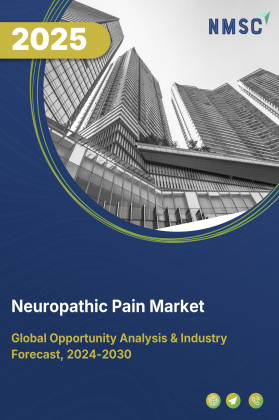
Injectable Drug Delivery Market by Product Type (Prefilled Syringes, Injectable Pens, and Injectable Vials), by Technology (Conventional Injectable Device and Self-Injection Device), by Therapeutic Application (Autoimmune Disease, Hormonal Disorder, and Others), by Therapeutic Drug Class (Insulin, and Others), by Injection Site (Subcutaneous Injections, and Others), and by Distribution Channel (Hospitals and Clinics, and Others) – Global Opportunity Analysis and Industry Forecast, 2024–2030
Market Definition
The global Injectable Drug Delivery Market size was valued at USD 693.60 million in 2023, and is predicted to reach USD 1266.92 million by 2030, with a CAGR of 10.6% from 2024 to 2030. Injectable drug delivery is a branch of a controlled drug delivery system that delivers pharmaceutical medications into the bloodstream or specific areas of the body. Such method allows accurate dosage, higher solubility, and faster medication effect.
The injectable drug delivery market deals with the development and vending of drug delivery devices and systems. There are a wide range of products such as syringes, auto-injectors, and wearable injectors that can be used to deliver a variety of drugs including vaccines, insulin and biologics directly into the patient's body. The emergency situations in which oral administration is not practical, injectable drug delivery systems are essential. They help maximize therapeutic benefits while minimizing the release of unwanted drugs into the body.
Market Dynamics and Trends
The increasing number of people with chronic diseases is driving the growth of the injectable drug delivery market. As injectable drug delivery systems can target and control the administration of therapeutic agents, they can improve treatment effectiveness and reduce side effects.
Injectable drug delivery can also be personalized to the needs of each patient. According to the National Diabetes Statistics Report, as of 2022, approximately 37.3 million adults are living with diabetes in the U.S. Moreover, based on the latest data published by the World Health Organization, about 422 million people worldwide have diabetes, and the majority living in low- and middle-income countries, and 1.5 million deaths are attributed to diabetes every year.
Also, the advancements in automated injectable drug delivery systems, such as auto-injectors, pen injectors, needle-free injection devices, and others, are driving the market growth. These systems allow users to regulate the precise dosage of treatment, including speed, volume, needle depth, dwelling time post-injection, and others, allowing for safe injection parameters. Such therapeutic control enhances the overall effectiveness of medication.
For instance, in February 2023, Roche received the U.S. Food and Drug Administration (FDA) approval for its new automated injectable drug delivery device, Vial Mate. The device is designed to smoothen the process of preparing and administering injectable drugs by lowering the manual handling needs and reducing the risk of contamination. However, the risk of contamination associated with injectable drug delivery and the lack of proper disposal systems are the factors restraining the injectable drug delivery market growth.
On the contrary, the development of advanced injectable drug delivery systems, such as Hyaluronic acid (HA)-based nanocarriers that can improve the effectiveness of anti-cancer drug delivery, is expected to create ample opportunities in the coming years. Such injectable drug delivery systems can differentiate between healthy tissues and cancerous tissues and help reduce residual toxicity and off-target accumulation. They are developed to only impact the targeted cells.
Market Segmentation and Scope of the Study
The injectable drug delivery market share is segmented on the basis of product type, technology, therapeutic application, therapeutic drug class, injection site, distribution channel, and region. Based on the product type, the market is divided into prefilled syringes, injectable pens, needle-free injectors, autoinjectors, and injectable vials.
Based on technology, the market is classified into conventional injectable device and self-injection device. Based on the therapeutic application, the market is segregated into autoimmune disease, hormonal disorder, oncology, orphan disease, and others.
On the basis of the therapeutic drug class, the market is bifurcated into insulin, chemotherapeutic agents, hormones, vaccines, and others. On the basis of the injection site, the market is classified into subcutaneous injections, intramuscular injections, and intravenous injections.
Based on the distribution channel, the market is categorized into hospitals and clinics, retail pharmacies, and online pharmacies. Geographical breakdown and analysis of each of the aforesaid segments includes regions, such as North America, Europe, Asia-Pacific, and the Rest of the World (RoW).
Geographical Analysis
North America holds the dominant share of the injectable drug delivery market, due to the growing prevalence of chronic diseases such as cancer in this region. For instance, in 2023, the American Cancer Society projected that the number of new cancer cases will reach over 1.9 million by the end of 2023 in the U.S. The growing focus on combatting chronic diseases, such as cancer, has increased the need for accurate and efficient drug administration methods. Injectable drug delivery systems have emerged as a crucial solution. This, in turn, is expected to drive the market growth in the region.
Moreover, the presence of major pharmaceutical companies operating in the U.S. and the constant development of injectable drugs for better cures play a major role in the growth of the injectable drug delivery market in this region. For instance, in February 2021, Biogen, the U.S.-based pharmaceutical company, launched an FDA-approved injectable drug named Plegridy for the treatment of relapsing forms of multiple sclerosis. The introduction of this drug offers patients an injectable option to cure their medical condition.
On the other hand, the Asia-Pacific region is expected to witness a median rise in the injectable drug delivery market, due to the region's rapidly advancing healthcare infrastructure and increasing healthcare expenditure. Countries in the Asia-Pacific region experience economic growth and improvements in living standards. There is a corresponding increase in investments in healthcare technologies and services. This improved healthcare infrastructure creates a conducive environment for the adoption of advanced drug delivery systems, including injectable solutions.
The presence of regional market players such as Eisai Co., Ltd., Terumo Corporation, and Hyphens Pharma, is further driving the injectable drug delivery industry in this region. These players are investing heavily in their business expansion and undertaking research and development (R&D) projects across this region. For instance, in October 2022, Eisai announced an investment of USD 67 million in the construction of a research building dedicated to injectable drug formulations. This investment was aimed at strengthening Eisai's R&D capabilities in the field of injectable drug formulation.
Competitive Landscape
Various market players operating in the injectable drug delivery industry include Beckton, Dickinson, and Company, Pfizer, Inc., SHL Medical AG, Terumo Corporation, Eli Lilly and Company, Genentech, Inc., Baxter International Inc., SCHOTT AG, Sanofi, Amgen, Inc., UCB SA, Gerresheimer AG, B. Braun SE, Ypsomed, Teva Pharmaceutical Industries Ltd., and others. These market players are engaging in partnerships and collaborations to remain dominant in the market.
For Instance, in July 2023, SHL Medical and MoonLake Immunotherapeutics AG collaborated to develop an autoinjector for a drug called sonelokimab, which is used to treat inflammatory diseases. The autoinjector will be created using SHL Medical's Molly modular platform technology, a drug delivery device solution for innovative biotechnology companies. This collaboration will positively impact the injectable drug delivery market by increasing demand for autoinjectors.
Moreover, in March 2022, Sanofi joined forces with Enable Injections, Inc. to develop the hypodermic delivery system for a novel drug aimed at offering a distinct patient-centric treatment approach for multiple myeloma disease. Under this collaboration, the company aims to accelerate the scientific development program for the hypodermal preparation and delivery of the anti-CD38 antibody sarclisa used to treat multiple myeloma.
Key Benefits
-
The injectable drug delivery market report provides a quantitative analysis of the market estimations throughout 2023 to 2030. This analysis assists in identifying the prevailing industry opportunities to capitalize on.
-
The study comprises an extensive analysis of the current and future injectable drug delivery market trends to depict prevalent investment pockets.
-
The information related to key drivers, restraints, and opportunities and their impact on the injectable drug delivery industry is provided in the report.
-
The competitive analysis of the players along with their market share in the injectable drug delivery market is provided in the report.
-
The SWOT analysis and Porter's Five Forces model are elaborated on in the study.
-
The value chain analysis in the market study provides a clear picture of the roles of the stakeholders.
Injectable Drug Delivery Market Key Segments
By Product Type
-
Prefilled Syringes
-
Injectable Pens
-
Needle-Free Injectors
-
Autoinjectors
-
Injectable Vials
By Technology
-
Conventional Injectable Device
-
Self-Injection Device
By Therapeutic Application
-
Autoimmune disease
-
Hormonal disorder
-
Oncology
-
Orphan disease
-
Others
By Therapeutic Drug Class
-
Insulin
-
Chemotherapeutic Agents
-
Hormones
-
Vaccines
-
Others
By Injection Site
-
Subcutaneous Injections
-
Intramuscular Injections
-
Intravenous Injections
By Distribution Channel
-
Hospitals and Clinics
-
Retail Pharmacies
-
Online Pharmacies
By Region
-
North America
-
The U.S.
-
Canada
-
Mexico
-
-
Europe
-
The U.K.
-
Germany
-
France
-
Italy
-
Spain
-
Denmark
-
Netherlands
-
Finland
-
Sweden
-
Norway
-
Russia
-
Rest of Europe
-
-
Asia-Pacific
-
China
-
Japan
-
India
-
South Korea
-
Australia
-
Indonesia
-
Singapore
-
Taiwan
-
Thailand
-
Rest of Asia-Pacific
-
-
Rest of the World (RoW)
-
Latin America
-
Middle East
-
Africa
-
Key Players
-
Beckton, Dickinson, and Company
-
Pfizer, Inc.
-
SHL Medical AG
-
Terumo Corporation
-
Eli Lilly and Company
-
Genentech, Inc.
-
Baxter International Inc.
-
SCHOTT AG
-
Sanofi
-
Amgen, Inc.
-
UCB SA
-
Gerresheimer AG
-
B. Braun SE
-
Ypsomed
-
Teva Pharmaceutical Industries Ltd.
REPORT SCOPE AND SEGMENTATION:
|
Parameters |
Details |
|
Market Size in 2023 |
USD 693.60 Million |
|
Revenue Forecast in 2030 |
USD 1266.93 Million |
|
Growth Rate |
CAGR of 10.6% from 2024 to 2030 |
|
Analysis Period |
2023–2030 |
|
Base Year Considered |
2023 |
|
Forecast Period |
2024–2030 |
|
Market Size Estimation |
Million (USD) |
|
Growth Factors |
The increasing prevalence of chronic diseases The development of an automated injectable drug delivery system |
|
Countries Covered |
28 |
|
Companies Profiled |
15 |
|
Market Share |
Available for 10 companies |
|
Customization Scope |
Free customization (equivalent to up to 80 working hours of analysts) after purchase. Addition or alteration to country, regional, and segment scope. |
|
Pricing and Purchase Options |
Avail customized purchase options to meet your exact research needs. |




















 Speak to Our Analyst
Speak to Our Analyst

























